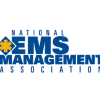This article originally appeared in the May newsletter of the National EMS Management Association and is republished here with permission.
By John Chamberlin, NEMSMA
One of the most basic paramedicine assessment tools, the stethoscope, was invented in 1816. That basic assessment tool has evolved through various processes of innovation but still remains a primary assessment tool.
Like the stethoscope, the industry of paramedicine continues to evolve through innovation. New equipment, new material for uniforms, electronic charting and assessment apps are all part of the innovation that have intended to improve the work that we do.
Innovation has also been a part of improving education from unique training tools to full-blown immersed electronic scenarios. But is innovation always good? Are the providers of today so technology dependent that they are less skilled at patient and partner interactions?
I recently came across a recent training innovation that takes us all backward … in a good way!
Welcome to the innovation of the paramedicine escape room developed by the University of Pittsburgh Medical Center, Prehospital Care staff for a regional education conference. It was based on the new trend of escape room concepts for entertainment.
Bringing escape room problem solving to EMS
According to Curt Neill, senior manager for the office, “At a time when technology is racing forward in the healthcare industry, providers have become more and more reliant on smart phones and tablets to direct their patient care. I’m afraid that future generations of EMS providers will struggle to strike up a conversation with a patient during the transport to the hospital or not be able to problem solve or effectively express an idea because there just wasn’t an app available to assist them.”
Curt and his team structured the escape room around the delivery of basic patient care. However, the emphasis was not on the traditional skill performance that EMS providers come to expect, but instead; they were challenged to problem-solve and communicate with each other.
Instead of performing patient care skills, the EMS teams would verbalize a step in patient care that would lead them to a piece of equipment that the team discovered was locked. Attached to the equipment, the team would find a written puzzle or riddle that needed to be solved so that they could obtain one of three keys. Clues were placed throughout the room that would help the teams throughout the scenarios.
In my opinion, this concept is fantastic. Like the stethoscope has changed through innovation, so have the assessment tools. But, the art of listening, through a stethoscope or to a patient or your partners, is still one of the most basic and important paramedicine tools of all (the next part may make me sound old) and I believe listening and basic human interaction is becoming a lost art.



